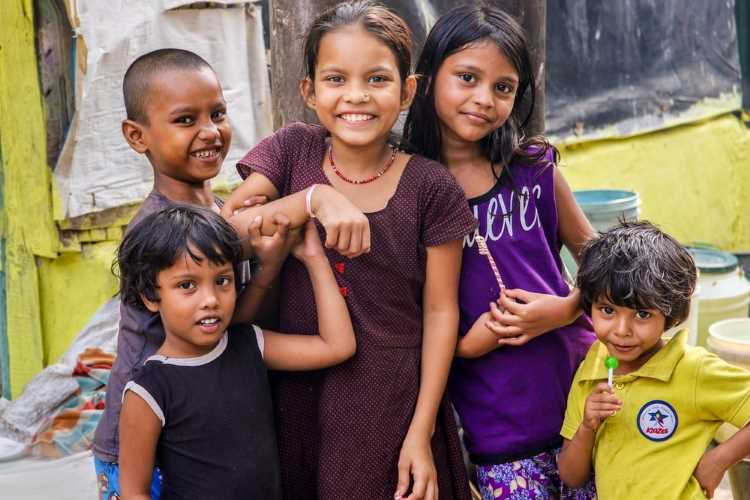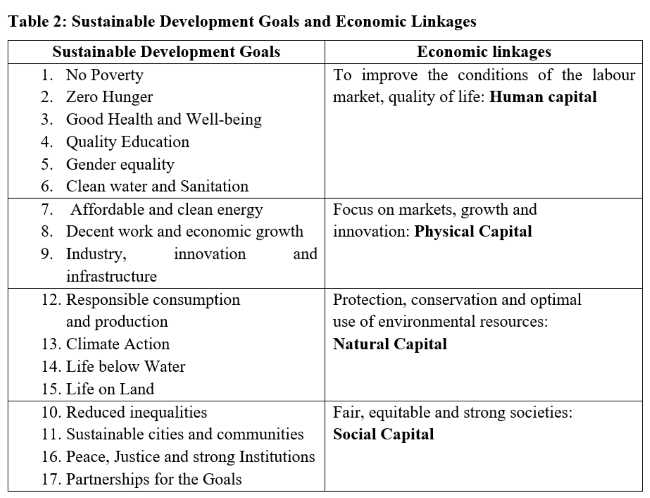
By KP Vipin Chandran
Economic liberalisation — A scorecard: India’s economic reforms and the successful policies of economic stabilisation and structural adjustment came as reaction to the balance of payments crisis in 1991. After the introduction of reforms, India managed to break away from the low “Hindu” rates of growth and achieved rapid economic recovery. Indian economy opened up to become an attractive destination for foreign investors.
While India’s record of economic growth has been impressive since liberalisation, the benefits of economic expansion has not reflected in its human development indices. Most policy planners and economists see human development as an alternative measure for a country’s economic progress. In 1991, India occupied 114th position among 144 countries in the United Nations Human Development Index. It dropped to 131 among 189 countries on the 2020 list. India ranks 94 among 107 countries in the Global Hunger Index 2020 and is in the serious hunger category. On the list, only 13 out of the 107 countries fare worse than India and these include Rwanda (97), Nigeria (99), Liberia (102) and Mozambique (103).
READ I Flawless planning, execution key to success of Covid-19 response
Economic liberalisation and jobless growth
India is witnessing the phenomenon of jobless growth that exposes the failure to create jobs in the last 30 years despite rapid economic growth. Reserve bank of India data comparing the growth rate of employment from 1980-81 to 2017-18 has two reference periods — 1980-81 to 1990-91 and 1990-91 to 1999-2000. During the first period, compound annual growth rate (CAGR) of employment was 2.02% and in the second period employment growth was only 1.54%.
In the post-liberalisation period, the growth rate of employment fell. The job growth in non-agriculture sector was higher in the pre-reform period 1980-81 to 1990-91, when its CAGR was 3.67%. Between 1991-92 and 1999-200, this fell to 3.05%, slightly improved to 3.6% in the period of 1999-2000 to 2009-10 and then declined sharply to 2% between 2009-10 and 2017-18.

World bank data show that India’s labour force participation rate (LFPR) was 58.4% in 1990. LFPR declined sharply to 49.4% in 2020. The same phenomenon can be observed in the case of female labour force participation during this period. In 1990, female labour force participation rate in India was 30.3% which declined to 20.8% in 2019.
READ I GST@4: Centre must simplify regime, win back states’ trust
Multidimensional poverty
Economic growth helped India lift a significant section of people from absolute poverty. Yet, the incidence of poverty remains high. In 2011-12, at least 25-30% of the country’s 1.2 billion people lived in absolute poverty in terms of food and clothing. Deepak Nayyar point out that if we were to use a higher poverty line that allows for other basic needs such as appropriate shelter, adequate healthcare and education, about 75% of the population lives in absolute poverty.
The population between the two poverty lines, more than 40% of the population is vulnerable to shocks such as a bad harvest, high inflation or an illness in the family that can push them deeper into poverty. In 2011, one third of the poor people in the world lived in India.
S Mahendra Dev made two conclusions on the trend in poverty. Gaurav Datt and others conducted a study that revealed that poverty declined by 1.36% per annum after 1991, compared with 0.44% per annum prior to 1991. The study says urban growth is the most important contributor to the rapid reduction in poverty, even though rural areas showed growth in the post-reform period. Secondly, poverty declined faster in 2000s than in 1990s.
The Tendulkar committee reveals that poverty declined only 0.74% per annum during 1993-94 to 2004-05. But poverty declined by 2.2% per annum during the period between 2004-04 and 2011-12. Rangarajan Committee report showed faster reduction in poverty during 2009-10 to 2011-12. Social security measures such as Mahatma Gandhi National Rural Employment Guarantee Act (MGNREGA) was introduced by UPA-I which contributed to the decline in poverty in 2000s, compared with 1990s.
The Multidimensional Poverty Index (MPI), an alternative measure of poverty, was published by the United Nations Development Programme (UNDP) and the Oxford Poverty and Human Development Initiative (OPHI) in 2010. India has made significant progress reducing multidimensional poverty, according to the report of Global Multidimensional Poverty Index 2020. The incidence of multidimensional poverty almost halved between 2005-06 and 2015-16, climbing down to 27.9% from 55.1%.
The MPI identifies how people are being left behind across three key dimensions: health, education and standard of living, and 10 indicators — nutrition, child mortality, year of schooling, school attendance, sanitation, cooking fuel, drinking water, electricity, housing and assets. The deprived in at least a third of the MPIs components are defined as multidimensional poor.
Pockets of poverty are found across India, but multidimensional poverty is particularly acute in four states — Bihar, Jharkhand, Uttar Pradesh and Madhya Pradesh. These accounted for 196 million people suffering from MPI poverty, more than half of the numbers in India. Kerala, Delhi and Goa have the lowest incidence of multidimensional poverty. Across nearly every state, poor nutrition is the largest contributor to multidimensional poverty.
READ I Human development challenge: Need to address new forms of inequalities created by Covid-19
Rising Inequalities
The latest Oxfam report on Inequality reveals that India’s richest 1% hold more than four times the wealth held by 953 million people who make up the bottom 70% of the population. The total wealth of all Indian billionaires is more than the full year budget of India. Renowned economist Thomas Piketty and Lucas Chancel wrote a paper titled “Indian income inequality, 1922-2014: From British Raj to Billionaire Raj”. India witnessed a sharp rise in the incomes of top 1% since 1980s. The study was based on NSSO data and national accounts statistics and tracks the dynamics of Indian income inequality from 1922 to 2014.
The study reveals that the share of income of the top 1% of the population contracted substantially from the mid-1950s to the mid-1980s, form about 13% of fiscal income to less than 5% in the early 1980s. However, after the introduction of economic liberalisation in India when pro-business policies were implemented, the situation was reversed, the share of the GDP held by the top 1% doubled from 5% to 10% in 2000. This study highlights the need for more inclusive growth in India and its findings reveal the unequal nature of post-liberalisation growth in the country.
Sustainable development goals
The United Nations Sustainable Development Goals (SDGs) was adopted in 2015 to provide a framework for making member states more just, peaceful, vibrant and prosperous by 2030. ‘Transforming our World: The 2030 agenda for sustainable development’ emphasises that achieving the SDGs requires balancing three dimensions of sustainable development: economic growth, social inclusion and environmental protection. Sustainable development requires us to balance our needs with the ability of future generations to meet their own needs. The crisis created by Covid-19 hindered the implementation of all SDGs and in some cases reverses the progress made over the years.
The Covid-19 pandemic has disrupted efforts to achieve the 2030 agenda for sustainable development. The global community finds itself in an unprecedented situation where parallel threats of health, economic and social crises left countries struggling to contain the epidemic and provide immediate financial relief for the many people affected by the associated macroeconomic downturns. The pandemic threatens to reverse years of progress on poverty, hunger, healthcare and education. The crisis has affected all sections of the population and all sectors of the Indian economy.
The primary goal of SDGs is to make the world hunger-free by 2030. The global economic downturn caused by the epidemic has caused extreme poverty, famine and child malnutrition among millions of people in many countries. The spread of the pandemic and its socio-economic impacts adversely affected the human development.
Sustainable development goals and economic linkages
Growing inequality in the first part of the 21st century is a central challenge for the 2030 agenda and the sustainability of human wellbeing. Large-scale, coordinated responses to the Covid-19 crisis, based on the best available evidence, can turn things around by building systems that strengthen resilience and enable all people to fulfil their potential in dignity and equality. The table No 2 gives how the SDGs are connected with the Economic factors.

The Sustainable Development Agenda is pivotal to the post pandemic economic recovery process and in the overall objective of creating a fair, equitable and sustainable world. This brief underlines two contentions: First, the SDGs contain various forms of capital — human, physical, natural and social — that are beneficial for governments and businesses, and a renewed policy focus on the goals will boost the post-pandemic global economy.
Second, statistical evidence confirms a strong causal relationship between SDGs and the local business environment. The SDGs will have long-term positive implications in the post-pandemic global economic scenario. It is crucial, however, that these results are treated as indicative and not more, given limitations in data availability.
Towards a better future
Despite faster economic growth post economic liberalisation, India still ranks low in the human development indices. Even though the country is classified as a medium human development country, we must recognise the fact that multidimensional poverty is still high. The country is lagging behind in meeting the Sustainable Development Goals on several dimensions.
Growth does help reduce poverty through the trickle-down effect and the ability to raise more resources on the part of the government to provide for increased social sector expenditure. A two-fold strategy can achieve this — letting the economy grow fast, and focusing on targeted programmes to help the weaker section of the society.
The crisis has revealed the vulnerability and inequalities inherent in current development models. Hence, rebuilding economies will require placing the SDGs and the principles of human rights and gender equality at the centre. Economic security is a cornerstone of well-being. Reducing inequality requires transformative change. Greater efforts are needed to eradicate extreme poverty and hunger, and India needs higher investments in health, education, social protection and job creation. It is important to promote inclusive social and economic growth. India must ensure equal opportunity, reduced inequalities of income and elimination of discriminatory laws, policies and practices.
Achieving sustainable development goals is critical to countering the impact of future pandemics. More research in the field of pandemic economics is needed. There is a need to take the threats raised by Covid-19 as a lesson and face the potential dilemma (public health and economic crisis) that may arise in future. The policies must eye accountability from governments and various agencies without abandoning the Sustainable Development Goals.
(Dr KP Vipin Chandran is Assistant Professor of Economics at Krishna Menon Memorial Government Women’s College Kannur, Kerala.)

